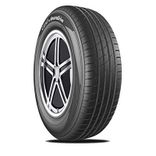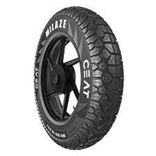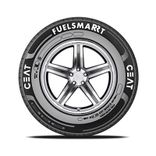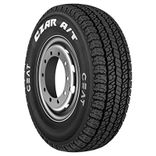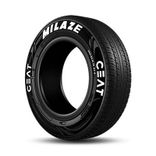Ad
Ad
What’s the Difference between Electric and ICE Vehicles Tyres?
What makes electric vehicle tyres unique? Learn about the distinct design and performance features that set EV tires apart from ICE vehicle tires.
Ad
Ad

Tyres are one of the most important parts for any vehicle but do you know Electric and Petrol/Diesel/CNG vehicles require different tyres. As we are seeing the increase in electric vehicles acceptance we should understand the difference between both the tyres. If you look at first then you will think it's the same but there is a difference in how they are constructed to fulfil different demands. So here in this article we will explain to you in detail about electric and ICE vehicles tyres in terms of design, performance, durability, cost and noise.
Tyre Requirements for Both ICE and Electric Vehicles
1. Weight Handling
This one is the most basic understanding of both types of vehicles as you know electric vehicles are heavier than ICE ones. EVs carry larger battery packs which makes your vehicle weigh more. So the tyre needs to be more strong and capable enough to handle extra weights of the vehicle. Let’s see the difference in terms of weight in both the tyres.
EV Tyre Requirements
- Reinforced sidewalls and higher load capacity to support the additional weight.
- Stronger internal construction to prevent deformation under heavy loads.
- Materials and compounds optimised for high-load resistance.
ICE Tyre Characteristics
- Standard load capacity for the lighter engine and drivetrain weight.
- Less need for reinforced sidewalls or enhanced structural support.
2. Instant Torque Handling
In electric vehicles you see a quick acceleration as they receive instant torque whereas in ICE vehicle torque acts gradually. That instant torque creates a difference and the tyre feels more stress and that leads to fast wear and tear. The manufacturer constructed EV tyres to handle these forces and stress.
EV Tyre Requirements
- Enhanced grip and traction capabilities to handle high torque at low speeds.
- Tyre tread designs optimized for fast power delivery without sacrificing longevity.
- Softer rubber compounds to maintain traction in high-torque situations.
ICE Tyre Characteristics
- Designed for gradual torque delivery, typical of gasoline and diesel engines.
- Standard rubber compounds suitable for slower power build-up.
3. Rolling Resistance and Energy Efficiency
To increase the range of electric vehicles and less energy consumption they have to think about rolling resistance. In this case we need less frictional force for better motion of tyres and that’s why reducing the rolling resistance is important and your EV can perform to cover a longer distance.
EV Tyre Requirements
- Low rolling resistance designs to extend the driving range.
- Special tread patterns and rubber compounds to reduce friction with the road.
- Lightweight tire construction to minimize energy loss during motion.
ICE Tyre Characteristics
- While rolling resistance is also considered, fuel economy is less reliant on tire design compared to EVs.
- Focus on balancing fuel efficiency and performance.
4. Durability and Wear Resistance
After discussing all three points above you may now understand the importance of durability. If you use regular tyres in EVs they will wear out faster as they are not constructed very well to handle heavy loads.
EV Tyre Requirements
- Tyres designed with high wear resistance to counter the faster wear caused by torque and weight.
- Durable tread patterns and materials to provide longevity despite these challenges.
ICE Tyre Characteristics
Traditional durability features designed for lighter vehicles with less frequent high-stress driving conditions.
5. Noise Reduction
In an electric vehicle there is no engine noise and it operates very quietly but. That’s where you hear road and tyre noises as it becomes more noticeable. Therefore EV tyres are designed in such a way that it reduces the noise and you get a smooth and quiet driving experience.
EV Tyre Requirements
- Special noise-reducing features like foam inserts or optimised tread patterns to minimise road noise.
- Acoustic tuning of tire patterns to reduce noise at various speeds.
ICE Tyre Characteristics
- Tyre noise is generally masked by engine and exhaust sounds, so noise reduction is less of a focus.
- Some higher-end tires may still include noise reduction features, but it's not as critical as for EVs.
6. Regenerative Braking Compatibility
You have heard this term before, it works very well in case of Hybrid vehicles and also in BeV. Regenerative Braking systems help the vehicle to store electrical energy in the battery when we apply breaks during our journey. But constant braking, traction and slowdowns demands will harm your tyres more.
EV Tyre Requirements
- Tread designs and compounds that provide excellent grip during braking.
- Stability and consistent performance during frequent regenerative braking events.
ICE Tyre Characteristics
- Traditional braking systems rely on friction rather than energy recovery, so tires are not required to handle regenerative braking.
- Braking performance remains important, but the stresses on the tires are different from those of EVs.
7. Cost Differences
All the above reasons affect the tyre cost where the manufacturer has to use different technology and construction methods to fulfil all requirements. They focus on making EV tyres more lighter and stronger to last long without having decrease in range problems .
EV Tyre Costs
- Generally more expensive due to advanced materials, reinforced structures, and specialized designs.
- Higher upfront cost but potentially lower total cost of ownership due to durability and range-boosting features.
ICE Tyre Costs
- Wider availability and lower manufacturing costs lead to generally lower prices.
- Focused on balancing performance and cost efficiency without the same need for high-tech materials.
CarBike360 Says
Although the tires on ICE and electric cars may seem comparable at first, there are significant changes underneath. EV tires are made with specific features to meet the needs of these vehicles, from packing extra weight for electric automobiles to maximising energy efficiency by lowering rolling resistance.
Although they may cost more up front, buying high-quality tires designed specifically for electric cars can increase safety, quieter rides, and range. Tire technology will develop together with electric vehicles, guaranteeing that tires will always be an essential part of maximising the performance of ICE and EV vehicles.
More Articles

Best Low Maintenance SUV Cars Under 20 Lakh in India 2025
Looking for an SUV that's budget-friendly and easy to maintain? Discover the best low-maintenance SUVs under ₹20 lakh in India for 2025, including top models with great mileage, reliability, and affordable service costs.
06-May-2025 11:02 AM
Read Full Article
Best Low Maintenance SUV Cars Under 20 Lakh in India 2025
Looking for an SUV that's budget-friendly and easy to maintain? Discover the best low-maintenance SUVs under ₹20 lakh in India for 2025, including top models with great mileage, reliability, and affordable service costs.
06-May-2025 11:02 AM
Read Full Article
Best Cruiser Bikes Under 10 Lakh Rupees in India 2025: Top Picks for Style and Comfort
Explore the best cruiser bikes under ₹10 lakh in India for 2025. Discover top models that offer a perfect blend of style, performance, and long-distance comfort.
06-May-2025 06:32 AM
Read Full Article
Best Cruiser Bikes Under 10 Lakh Rupees in India 2025: Top Picks for Style and Comfort
Explore the best cruiser bikes under ₹10 lakh in India for 2025. Discover top models that offer a perfect blend of style, performance, and long-distance comfort.
06-May-2025 06:32 AM
Read Full Article
Complete Guide to Lubricants for Passenger Vehicles: Cars, Bikes & Scooters
Discover the best lubricants for cars, bikes, and scooters. Improve performance, mileage, and engine life with expert tips.
30-Apr-2025 07:18 AM
Read Full Article
Complete Guide to Lubricants for Passenger Vehicles: Cars, Bikes & Scooters
Discover the best lubricants for cars, bikes, and scooters. Improve performance, mileage, and engine life with expert tips.
30-Apr-2025 07:18 AM
Read Full Article
Top 10 Premium Electric Cars in India & The Best Luxury EVs to Buy
Explore the top 10 premium electric cars in India, offering luxury, performance, and cutting-edge technology. Find the best EVs from brands like Audi, BMW, Mercedes, Porsche, and more.
03-Apr-2025 07:39 AM
Read Full Article
Top 10 Premium Electric Cars in India & The Best Luxury EVs to Buy
Explore the top 10 premium electric cars in India, offering luxury, performance, and cutting-edge technology. Find the best EVs from brands like Audi, BMW, Mercedes, Porsche, and more.
03-Apr-2025 07:39 AM
Read Full Article
Royal Enfield’s Classic Legacy & A Journey Through Time and Innovation
Discover the rich legacy of Royal Enfield’s Classic series, from the first-generation models to the latest Classic 650. Explore its timeless design, powerful performance, and evolution through the years.
01-Apr-2025 08:48 AM
Read Full Article
Royal Enfield’s Classic Legacy & A Journey Through Time and Innovation
Discover the rich legacy of Royal Enfield’s Classic series, from the first-generation models to the latest Classic 650. Explore its timeless design, powerful performance, and evolution through the years.
01-Apr-2025 08:48 AM
Read Full Article
The Xtreme 250R & Xpulse 210: A New Benchmark in Performance and Versatility
Hero MotoCorp elevates its game with the Xtreme 250R and Xpulse 210, two motorcycles designed to set new benchmarks in performance and versatility.
26-Mar-2025 02:12 PM
Read Full Article
The Xtreme 250R & Xpulse 210: A New Benchmark in Performance and Versatility
Hero MotoCorp elevates its game with the Xtreme 250R and Xpulse 210, two motorcycles designed to set new benchmarks in performance and versatility.
26-Mar-2025 02:12 PM
Read Full ArticleAd
Ad







